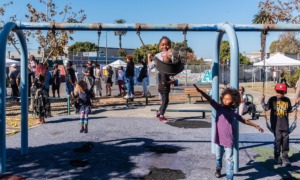Author(s): Chapin Hall at the University of Chicago
Published: Nov. 15, 2017
Report Intro/Brief:
“Missed Opportunities: National Estimates highlights results from a national survey on unaccompanied youth homelessness in America. The study captures youth homelessness broadly, including sleeping on the streets, in shelters, running away, being kicked out, and couch surfing. Overall, findings show one in 10 young adults ages 18-25, and at least one in 30 adolescents ages 13-17, experience some form of homelessness unaccompanied by a parent or guardian over the course of a year. As a nation, we are missing opportunities to ensure that all young people can reach their full potential and contribute to stronger communities and economies across the country.
Five Major Findings:
(1) Youth homelessness is a broad and hidden challenge.
(2) Youth homelessness involves diverse experiences and circumstances.
(3) Prevention and early intervention are essential.
(4) Youth homelessness affects rural youth at similar levels.
(5) Some youth are at greater risk of experiencing homelessness.
Recommendations:
- Conduct national estimates of youth homelessness biennially to track our progress in ending youth homelessness.
- Fund housing interventions, services and prevention efforts in accordance with the scale of youth homelessness, accounting for different needs.
- Federal policy should encourage assessment and service delivery decisions that are responsive to the diversity and fluidity circumstances among youth experiencing homelessness.
- Build prevention efforts in systems where youth likely to experience homelessness are in our care: child welfare, juvenile justice and education.”
- Acknowledge unique developmental and housing needs for a young population and adapt services to meet those needs.”
- Tailor supports for rural youth experiencing homelessness to account for more limited service infrastructure over a larger terrain.”
- Develop strategies to address the disproportionate risk for homelessness among special subpopulations, including pregnant and parenting, LGBT, African-American and Hispanic youth, and young people without high school diplomas.”































